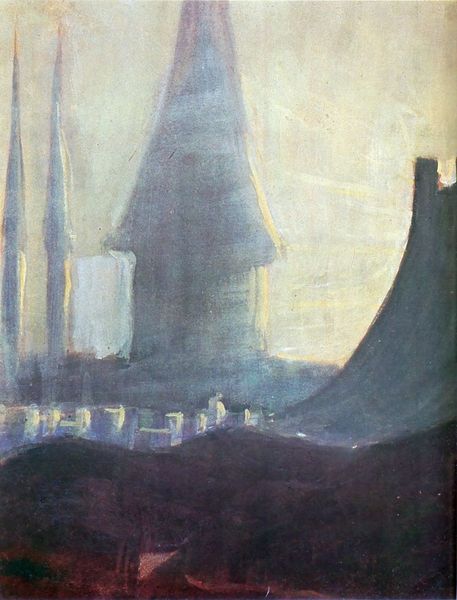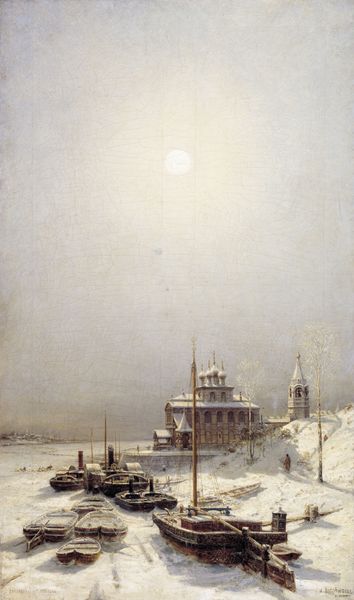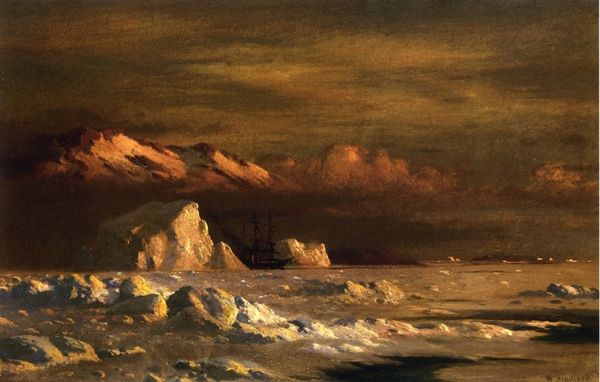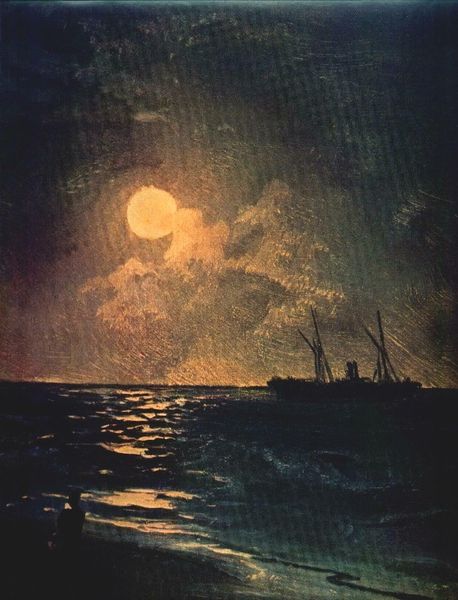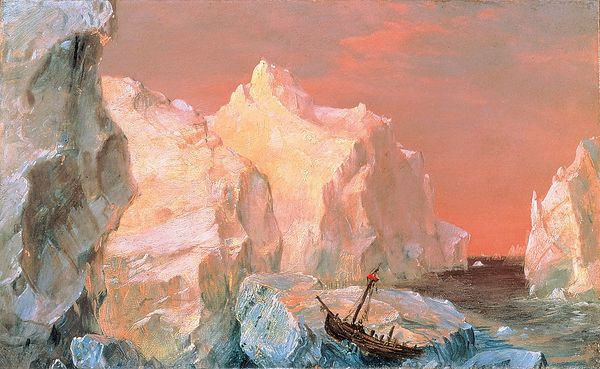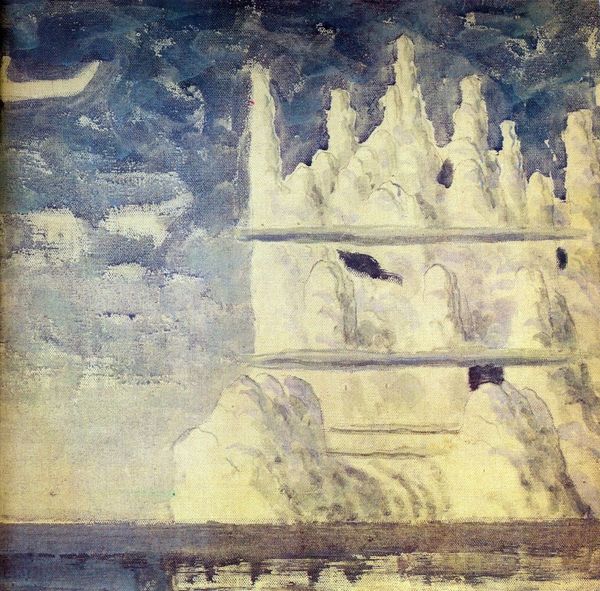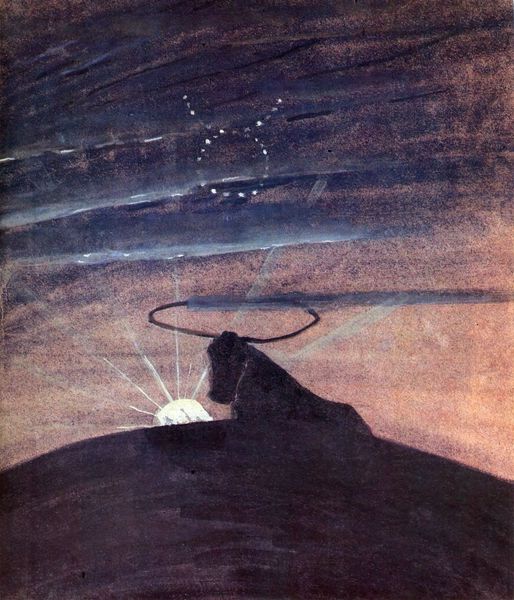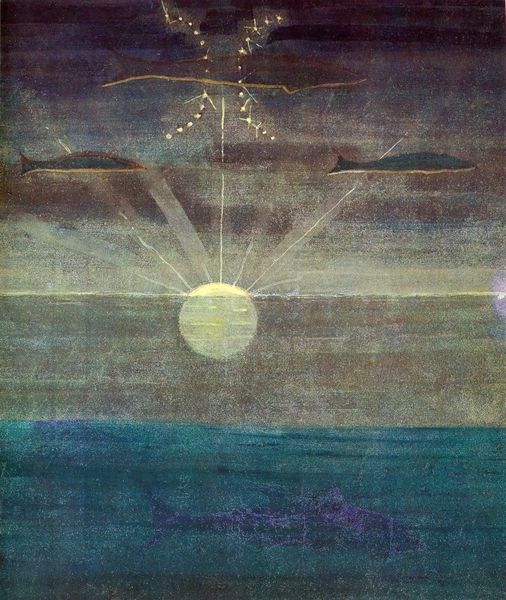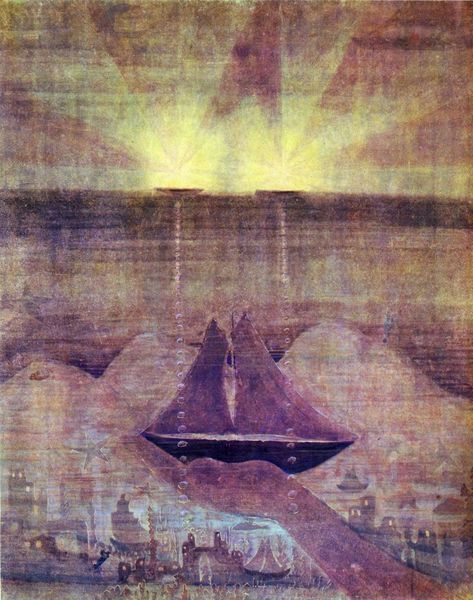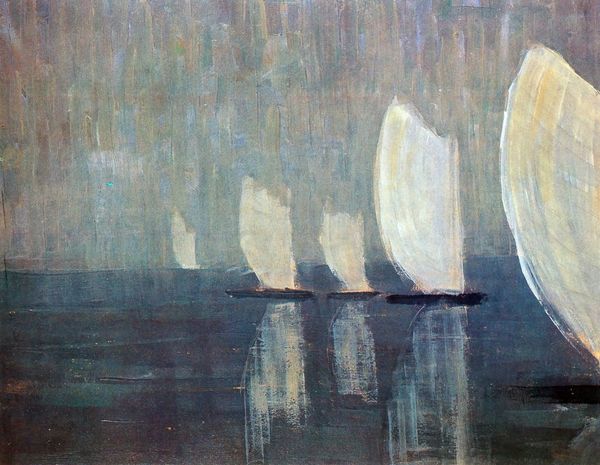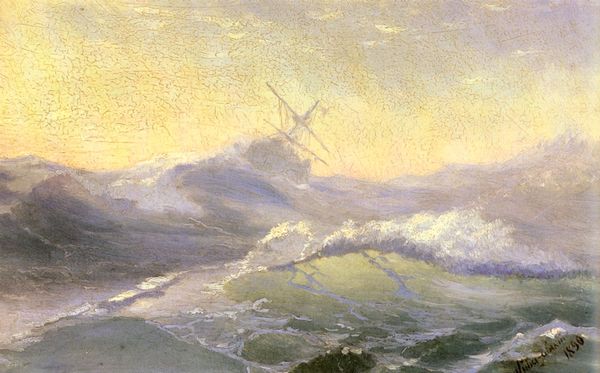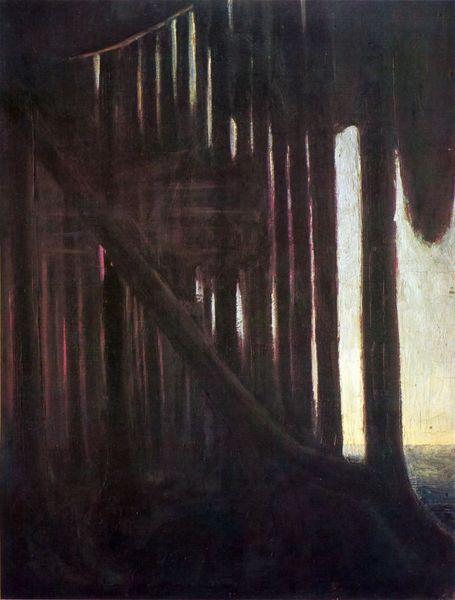
Copyright: Public domain
Curator: Ivan Aivazovsky painted this scene, "St. Petersburg. The ferry across the river", in 1870. It’s oil on canvas. My first thought is, what a stark winter image, the chill almost radiates from the canvas. Editor: It’s definitely atmospheric. That predominant purple sky really sets a mood, doesn't it? But look at the material contrast—those chunky ice floes seem almost tactile against the smooth, misty sky. And the technique used to render the ice looks deliberately rougher than the way he has handled the rest of the painting, doesn't it? Curator: It speaks to a romanticised, yet realistic depiction of St. Petersburg. The distant spire—likely the Peter and Paul Cathedral—anchors the composition, representing power and permanence against the transience of the winter landscape and figures crossing. Editor: Transience is a good word here. It really brings to mind the labor involved. Imagine the effort of navigating that ferry, or sled even. I'm thinking of the hands that worked those materials, moved those passengers across a dangerous landscape for relatively low return in comfort, pay or esteem. Curator: Precisely! It gives us insight into the social realities of the era, Aivazovsky using this imagery to convey how the inhabitants adapted to the conditions while also displaying a pride in the imperial capital even in a hostile season. There is no suggestion here that Imperial wealth brought any level of protection. The danger to those people must have been all too real, regardless of social class. Editor: Yes, Aivazovsky’s technical skill certainly helps the image connect. His layering of paint mimics the layering of garments perhaps or indeed a building's facade. The impasto of the ice clashing, I think, quite strongly with the thinner washes elsewhere and creating a great surface to play with, that really catches the light. Curator: Well, the play of light adds to the drama, spotlighting elements like the golden cathedral spire against the violet sky. That symbolic contrast captures the contradictions inherent in Russia's identity during that time, its aspiration toward grandeur against stark realities. Editor: Thinking about it now, it makes you consider where paintings like this might be shown at the time, too. An expensive oil painting of working Russians struggling through Winter: would the same demographic ever see this? How far does the commodification of art for a privileged class affect the way we now understand images of its social past? Curator: A vital point, questioning the consumption and context! It highlights the power dynamics in viewing this artwork. It challenges us to consider how these historical images play a continuing role in our construction of collective memory, Editor: Absolutely, and by engaging with art critically, like this piece by Aivazovsky, we enrich our comprehension of process and materiality as an insight to those hidden socio-economic aspects of social identity. Curator: Yes, by questioning art's historical context we become attuned to the continuing legacy of images on shaping perception.
Comments
No comments
Be the first to comment and join the conversation on the ultimate creative platform.
